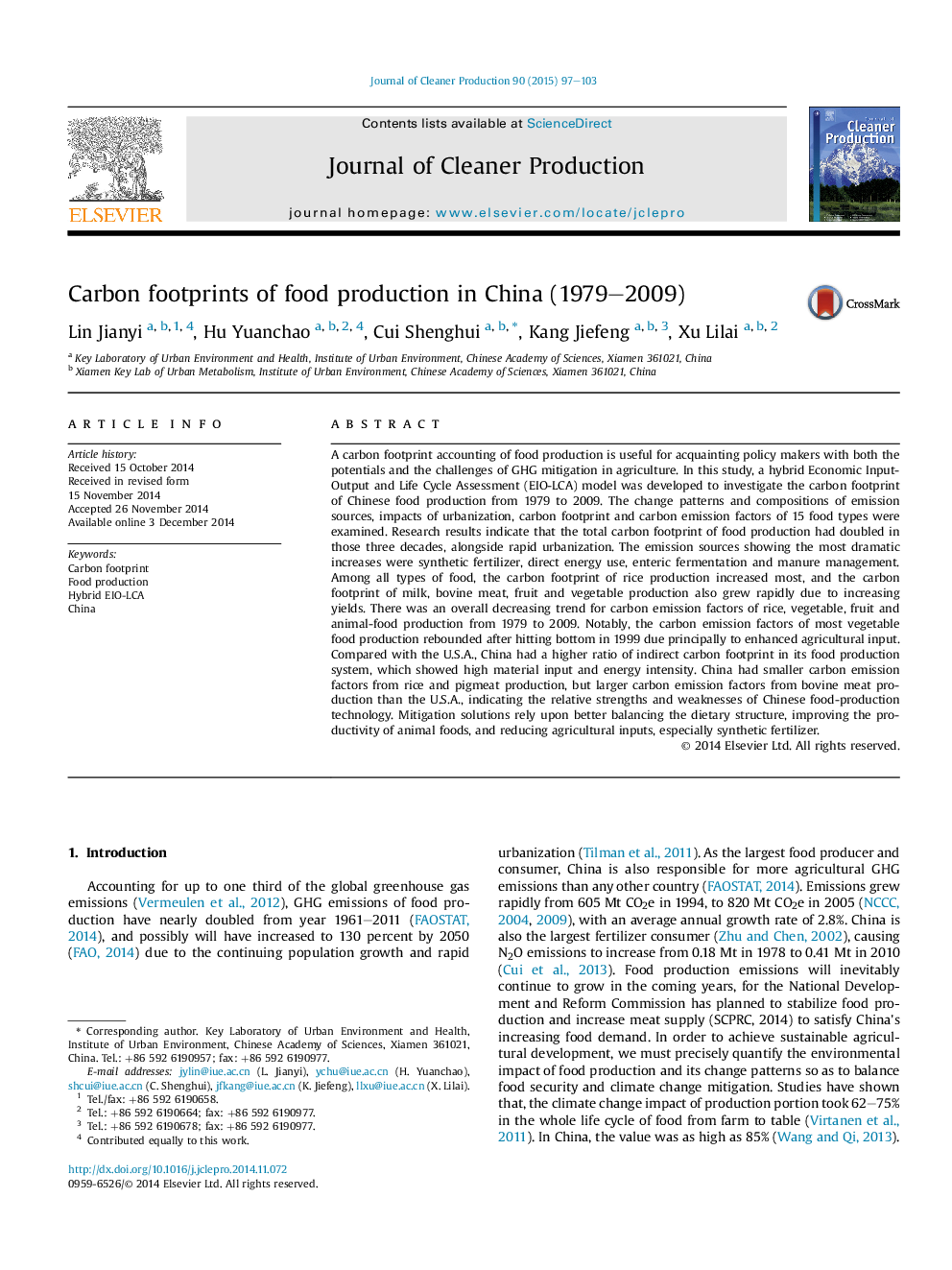| Article ID | Journal | Published Year | Pages | File Type |
|---|---|---|---|---|
| 1744666 | Journal of Cleaner Production | 2015 | 7 Pages |
•CF of Chinese food production doubled from 1979 to 2009.•Chinese food production showed relatively high material input and energy intensity.•CEFs of most food types had a decreasing trend.•CF of Chinese food production exhibited a strong correlation to urbanization.
A carbon footprint accounting of food production is useful for acquainting policy makers with both the potentials and the challenges of GHG mitigation in agriculture. In this study, a hybrid Economic Input-Output and Life Cycle Assessment (EIO-LCA) model was developed to investigate the carbon footprint of Chinese food production from 1979 to 2009. The change patterns and compositions of emission sources, impacts of urbanization, carbon footprint and carbon emission factors of 15 food types were examined. Research results indicate that the total carbon footprint of food production had doubled in those three decades, alongside rapid urbanization. The emission sources showing the most dramatic increases were synthetic fertilizer, direct energy use, enteric fermentation and manure management. Among all types of food, the carbon footprint of rice production increased most, and the carbon footprint of milk, bovine meat, fruit and vegetable production also grew rapidly due to increasing yields. There was an overall decreasing trend for carbon emission factors of rice, vegetable, fruit and animal-food production from 1979 to 2009. Notably, the carbon emission factors of most vegetable food production rebounded after hitting bottom in 1999 due principally to enhanced agricultural input. Compared with the U.S.A., China had a higher ratio of indirect carbon footprint in its food production system, which showed high material input and energy intensity. China had smaller carbon emission factors from rice and pigmeat production, but larger carbon emission factors from bovine meat production than the U.S.A., indicating the relative strengths and weaknesses of Chinese food-production technology. Mitigation solutions rely upon better balancing the dietary structure, improving the productivity of animal foods, and reducing agricultural inputs, especially synthetic fertilizer.
